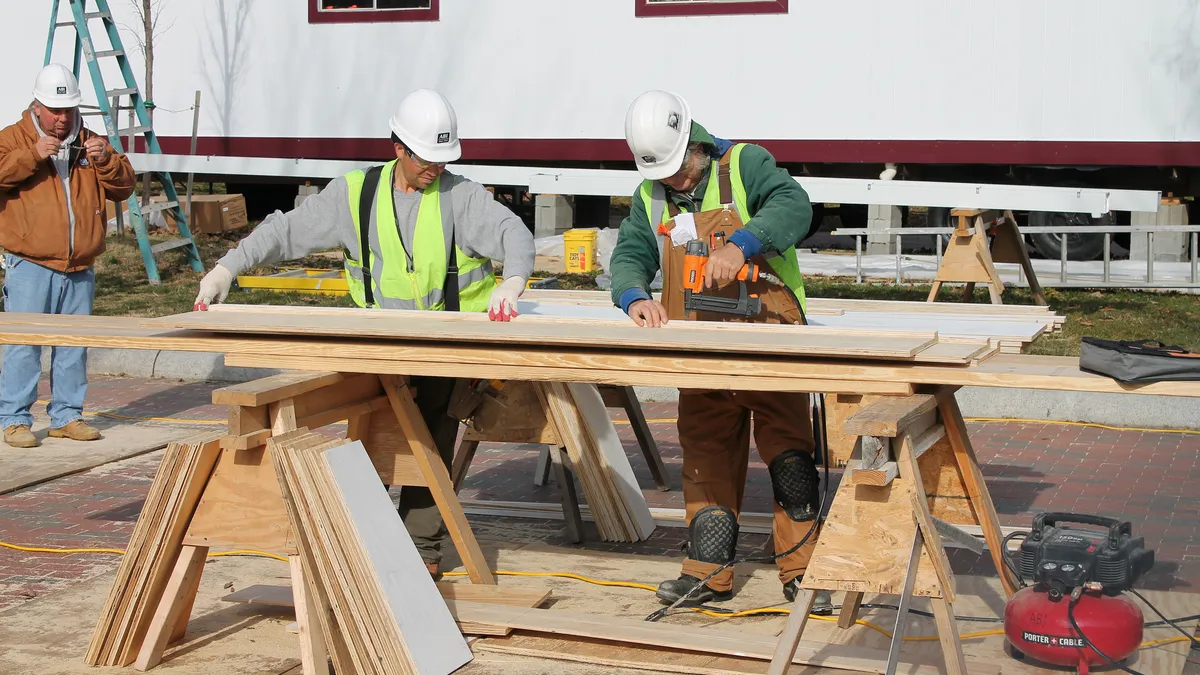Dive Brief:
- Construction employment grew in only 23 states month-over-month between March and April, with 42 states and Washington, DC, seeing job gains between April 2015 and April 2016, according to the Associated General Contractors of America.
- California (12,000 jobs, 1.6%) had the largest month-to-month job increase, while Idaho (1,700 jobs, 4.3%) had the biggest percentage gain.
- Of the 25 states and Washington, DC, to lose jobs from March to April, Tennessee (-3,500 jobs, -2.8%) lost the most jobs, while Rhode Island (-700 jobs, -3.8%) gave up the highest percentage. Yet again, North Dakota lost the most construction jobs, as well as the highest percentage of jobs, year over year (-4,600 jobs, -12.9%).
Dive Insight:
The AGC reported that early spring hiring due to mild winter weather could have put the brakes on job growth in April, and the association still warned of further worker shortages to come.
Ken Simonson, chief economist for the AGC, said that while early hiring might have dampened last month's numbers, the outlook for future work is positive, especially given that only six oil-coal states lost jobs in April. However, that optimistic forecast could be dampened if employers can't find enough qualified workers, Simonson noted.
"As spending on projects continues to grow during the busy summer construction season, more firms will be looking to add qualified workers," AGC CEO Stephen Sandherr said about the association's new AGC Career Center in a release. "With few students getting steered into construction careers, we want to make it as easy as possible for contractors to connect with available workers from across the country."
Earlier this month, in an analysis of the most recent BLS Job Openings and Labor Turnover Survey (JOLTS) data, the National Association of Home Builders determined that the construction industry's level of March unfilled jobs rose to its largest number since May 2007 — 210,000. While the NAHB said that such a high number of open positions is a good sign for future hiring, it also means that construction companies might have a more difficult time finding skilled workers.












